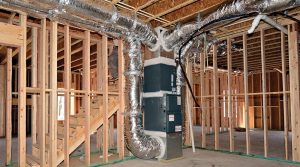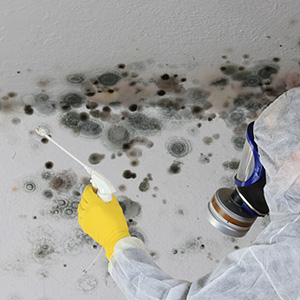- >
What Homeowners Need to Know About HVAC Ductwork
- By: Cheli Scott
- Date: Nov 17 2022
Similar Articles
What you Need to Know About Ductless Air Conditioning
Many consumers are unfamiliar with ductless air conditioning systems. We've assembled some info to help you learn!
How to Choose a Replacement Thermostat
The part of your HVAC system you interact with the most is your thermostat so let us help you choose the right one for your home!
How to Air Balance your Home
If you are concerned about your current system's performance, it may be time to consider investigating how to air balance your home.
What homeowners need to know about HVAC ductwork
The HVAC ductwork in your home is an often forgotten aspect of your heating and cooling system. It’s hidden away in your walls or attic, so you rarely interact with it, but it can have a huge impact on the functionality of your HVAC system.
Poorly functioning ducts can cause bad air quality, encourage mold growth, and result in high heating and cooling bills. You may also be experiencing hot or cold spots in your home or low air flow.
These problems can be caused by poor maintenance, regular wear and tear, and improper HVAC ductwork installation.
Types of air ducts
There are are two basic kinds of HVAC ductwork, flexible and rigid. Both kinds of HVAC ductwork are useful in different situations, can be made of different materials, and your home may use a combination of both.
Rigid ductwork
Rigid HVAC ductwork is durable and reliable. It can be made from a variety of different materials and may be insulated. One of the benefits of rigid ductwork systems is that they are usually made of surfaces that are resistant to mold.
Another important benefit is that they are puncture resistant. Holes or gaps in your ductwork system can allow water to pool and cause mold and water damage to your home. Rigid ductwork can be custom built to fit unique situations in your home.
Flexible ductwork
Flexible ductwork is usually made of plastic and is not as durable as rigid ducts. They have the possibility of getting punctures or kinks because they are flexible and made of softer material. The advantage of flexible ducts is that they can fit in tight or awkward spaces. Flexible ductwork is also cheaper.
Three kinds of ductwork in your HVAC systems
Depending on the age of your home, your may have one of a few kinds of ducts. We’ve listed the most common below.
Sheet metal ducts
Sheet metal ductwork systems are very durable. They are often made of steel or aluminum and are resistant to punctures. Their smooth surface is resistant to mold growth, but has a tendency to gather dust.
Fiberglass lined ducts
Though it is not recommended, fiberglass lined ducts are also an option. The danger with these ducts is that they can release tiny fiberglass particles into the air that can cause health problems.
They are also difficult to clean. The benefit of them is that they have a sound dampening and condensation preventing quality.
Fiberboard ducts
Similar to fiberglass lined ducts, fiberboard ducts are made of fiberglass. In this instance the fiberglass is pressed with resin and laminated with a foil sheet. Unfortunately, these types of ducts have a tendency to develop mold growth.
Common problems in ductwork systems
HVAC ductwork systems aren’t perfect, so over time you may start to develop problems. It is important to start off on the best foot with a good and experienced installation team. Proper installation will prevent future issues and extend the life of your ductwork systems. Keep reading to find out about some common problems that homeowners may experience with their ductwork.
Low air flow from your HVAC unit
Most HVAC technicians will agree, airflow is an often overlooked aspect of these systems. You may be experiencing hot or cold spots in your home due to low air flow. This can be caused by clogged or closed vents, supply registers, or an improperly functioning HVAC system. Clogged vents can become an important issue because they put a heavier load on your HVAC unit as it works to move air throughout your home.
Be sure you inspect your vents and filters to check for blockages. If you can’t seem to find a problem, then it is time to call a technician because there may be a bigger issue at play.
Noise
If you start to hear a strange noise from your air conditioner it’s possible there is a loose or damaged air duct. In general, you shouldn’t be able to hear your air conditioning unit inside your house. If you are hearing strange noises there is definitely a problem you need to investigate.
Poor indoor air quality
Punctures and leaks in your ducts can cause mold to grow or dust and other allergens to invade your system. Regular maintenance can mitigate this possibility with routine activities like changing air filters, however is poor air quality is becoming a serious problem in your home it may be time to enlist professional services.
The reverse is also true, if you have especially dirty indoor air quality, possibly from biological pollutants, you might find that your ducts accumulate dirt faster and may need to be maintained more often.
You don’t have to be ashamed of keeping a dirty house, however, researchers say 50% of homes have conditions correct for development of these air pollutants. It’s a pretty common problem and keeping up with HVAC maintenance helps out a lot.
Leaks
Over time the seals joining ductwork have a tendency to erode, causing gaps where allergens, , debris, moisture, and even vermin can invade. One of the worst but most likely things to happen is mold growth.
Whenever moisture is trapped in your air ducts the conditions become perfect for mold. Those mold spores are then picked up by your HVAC system and distributed all over your house.
Gross! You are breathing all of that in! For that reason, it is important to have your HVAC system inspected annually. A trained technician will know the signs of leakage and mold development.
Poor insulation
Air ducts generally have poor insulation on their own, so the insulation in your home helps keep the temperature in your crawl space or attic regulated. An unregulated temperature can cause condensation to build up, which can breed mold and cause water damage.
Hot and cold spots
If your home is old you may not have had much input on the installation of your air ducts. However, a poorly designed system will not heat and cool the living spaces in your home properly. If the original system was not designed to the right size for your home or if you have added rooms you may find your house it heating and cooling unevenly, leaving some places cold or hot.
This can be caused by a number of problems, but often it has to do with an improperly designed system for you home. Most HVAC jobs require at least some ductwork modifications. Ductwork design is a bit of an art and no two houses are exactly the same.
A professional technician can perform an assessment to test your HVAC systems capacity and make recommendations that will save you money as well as ensure your comfort.
If you are having a new HVAC ductwork installation or an upgrade, a professional is essential to designing a system that will last a long time and provide the best heating and cooling possible.
What do I do now?
If you feel like there is a problem with your air ducts you can’t fix yourself, don’t be afraid to call an experienced technician. It may seem like an inconvenient expense at first, but ductwork systems can be complicated and a professional can save you money in the long run, often with a free consultation. Heating and cooling is an important part of your health and comfort, so it’s important to take it seriously.
Be sure to choose an experienced HVAC technician like the ones at bhild.com. Call us today, or fill out our form here for a free estimate on HVAC services!









